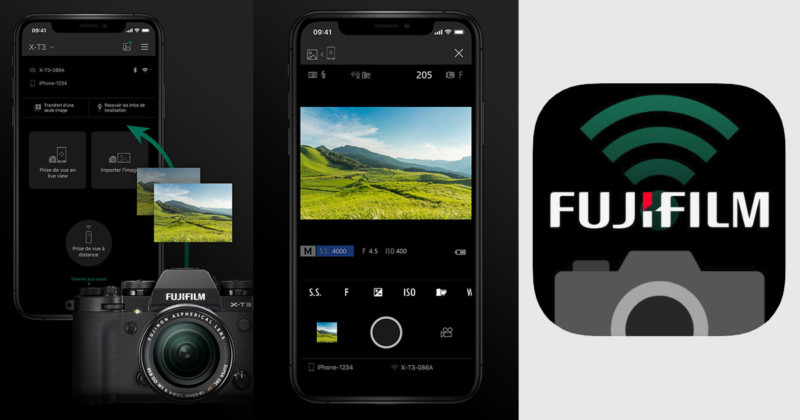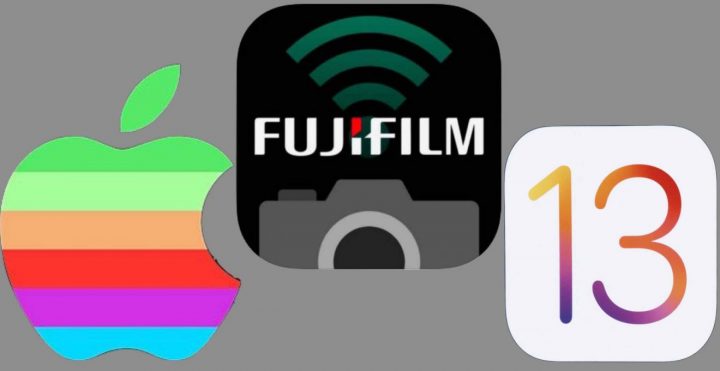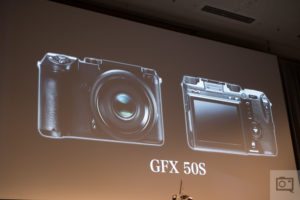
Introduction Editor's note: This story was originally published in 2021. With the 2024 release of the Fujifilm X100VI, we have updated the story to include the new camera. With the arrival of the X100VI, there is a new camera gunning for the top spot for large-sensor fixed-lens cameras sold at anything approaching a mainstream price.
We often see Ricoh's GR cameras discussed alongside Fujifilm's X100 series models. Both have a similar design approach, emphasize photography and have legions of loyal users who sing their praises as the compact of choice.
However, whereas the choice between the 28mm-equiv Ricoh GR and the 35mm-equiv X100 models can be made solely on focal length, the fractionally wide-of-normal 40mm-equiv lens of the GR IIIx makes the distinctions rather more nuanced.
One which lets us take a closer look at the fundamental differences between two of the camera series most beloved by their users.
Buy Fujifilm X100VI now:
$1,599 at B&H Photo
$1,599 at Adorama
Buy GR IIIx now:
$1047 at Amazon
X100VI
The X100VI doesn't deviate too far from the X100V in terms of body, lens and ergonomics. Unless you pick them up one after the other, you probably won't notice the VI is 43g heavier and 2mm deeper. As such, most of the points we made about the X100V also apply to the X100VI.
The most significant changes in the X100VI come on the inside with the addition of in-body stabilization and a new 40MP BSI CMOS sensor (borrowed from Fujifilm's X-H2 and X-T5). The VI also features Fujifilm's X Processor V, which brings with it the machine-learning trained subject recognition algorithms for animals, birds, automobiles, motorcycles and bikes, airplanes and trains.
Other changes new film simulation modes, video improvements, camera-to-cloud upload, and a redesigned tilt screen mechanism that better accommodates both waist-level and overhead shoots.
Remember these key differences as we compare the GR IIIX to the Fujifilm X100 series. There are very few differences between the X100V and X100VI beyond what we've outlined here. The only other killer feature to keep in mind is that you may actually find an X100VI on a store shelf.
Buy now:
$1,599 at B&H Photo
$1,599 at Adorama
Body
Both the GR and X100 designs are 'classic' in their own ways: the Fujifilm knowingly harks back to the appearance of 1960s rangefinders while the latest GR is styled in keeping with a lineage that stretches back 25 years to the GR1 film camera.
The conceptual distinction between the two cameras is clear the moment you put them alongside one another: the GR is small and discreet while the X100 is larger and much more ostentatious in its appearance. One of these cameras is designed not to draw attention to itself, whereas the X100 is more likely to be on display, hung around your neck and, even in its all-black form, almost begs to be a talking point.
Size
When we say the GR IIIx is small, we mean it. The GR IIIx may be 2mm (0. 079") deeper than its 28mm equiv sibling, but it's still pretty much the only APS-C camera that can genuinely be described as pocketable. Despite this, Ricoh has found room to incorporate an image stabilization system, shifting the sensor to correct for pitch, yaw and roll.
The X100 series is relatively compact but is much more difficult to stash away. Unlike the Ricoh, its lens doesn't retract into the body (though it can extend a little as it focuses). Notably, its 35mm equivalent lens opens up as far as F2, giving it a one stop advantage over the Ricoh. By some strange coincidence, adding IS to the X100VI also added 2mm (0. 079") to the camera's depth.
Both have leaf shutters, allowing high flash sync speeds and both have built-in ND filters to allow the use of wide apertures in bright light. The Fujifilm finds room for a small built-in flash; it's not a lot but, thanks to the fast sync speed of the leaf shutter, can provide a bit of 'fill' for nearby subjects on bright days.
Viewfinders and displays
The other difference is that the X100 is built around a complex (and expensive) electronic/optical hybrid viewfinder. The 'V' model also introduced a tilt-out LCD for waist-level shooting, but the viewfinder remains the X100 series' signature feature and is likely the most common way the camera is used.
By comparison, the GR has a fixed LCD, which represents its primary view on the world. A clip-in optical viewfinder is available but its 85% coverage figure and lack of settings display or connection to the camera means it's no substitute for the Fujifilm approach.
Both cameras offer touch-sensitive screens for placing the AF point or navigating menus and playback. The X100V and X100VI also have dedicated AF joysticks, whereas on the Ricoh you'll need to reconfigure the camera if you want to use its four-way controller to move AF.
Ergonomics
The conceptual differences between the cameras highlight themselves again when you go to use either of them. The Fujifilms are covered with marked dials and customizable buttons, encouraging you to take control over the camera's exposure settings and setup options. If anything, we feel the X100V and VI might now have too many dials: having the choice of using command dials or dedicated dials for each function gives flexibility but also means that most people will find some of the controls redundant.
The Ricoh is distinctly minimalist, by comparison. It has a command dial on the front, a clickable jog lever on the rear and not a lot else. There's a fiddly ring around the four-way controller, but the camera can be set up so that everything can be controlled without moving out of the one-handed holding/shooting stance. That demands a degree of setup (it's well worth putting your most-used functions in a sensible order in the 'ADJ' menu that appears when you press the rear toggle switch inwards), but it's a way of shooting that a great many GR owners have come to love.
Image Quality
There's very little to call regarding image quality between the 24MP FSI CMOS sensor in the Ricoh and the 26MP BSI one in the Fujifilm X100V.
The 40MP BSI CMOS in the X100VI however represents a significant difference; we're still testing to make a final assessment, but our early impressions have been positive and the camera seems to be making the most of the move to a 40MP sensor.
In terms of lenses, there's not a huge amount to choose between them, optically, though our initial impression is that the Ricoh remains a little sharper at the corners. The Fujifilm can focus a little closer (10cm, rather than the GR IIIx's 12cm), but it still gets a little soft at close distances and wide apertures, even though it's improved over its predecessors in this regard. Then, of course, there's the Fujifilm's brighter lens, which offers slightly shallower depth-of-field and more scope for working in low light.
In terms of JPEGs, both offer a range of interesting processing modes, both color and black and white, but we'd give the edge to the Fujifilm for offering a wide range of relatively subtle, attractive options.
Autofocus
The Fujifilm is a touch faster to autofocus than the GR IIIx but neither is super speedy. They'll both perform well for most of the types of photography they're likely to be used for, but neither is quite as rapid as the very quickest mirrorless interchangeable lens cameras. And, while both offer subject tracking and face detection modes, neither camera is especially good in this regard, either. They're both quick enough that you needn't demand your subject hold their pose and expression for the camera, but they're not as immediately, unerringly in-focus as the best mirrorless models.
Where the Ricoh makes up for its lack of pace is in its signature Snap Focus mode, where the camera shifts focus to a predetermined distance (specified in the menus), when you hit the shutter button. It's a feature much appreciated by street shooters who can simply dial-in the distance they anticipate the action happening at and hit the shutter knowing where the camera will then focus. There's also a 'Full Press Snap' option that activates Snap Focus if you fully press the shutter button without half-pressing to AF.
Battery life
Both the Ricoh and Fujifilms are relatively small cameras, once you've taken into account how much space the hybrid viewfinder and lens take up in the X100V's (and VI's) case.
Fujifilm gives numbers of 350 and 420 shots per charge using the EVF and OVF modes, respectively, for the X100V and 310 and 450 for the newer camera. These are very respectable numbers, helped by the move to using the larger, 8. 7Wh NP-W126S battery. The Ricoh only has room for a 4. 9Wh DB-110 battery, and its battery life rating only reaches 200 shots per charge, as a result.
We find these ratings, derived from a testing protocol laid down by industry body CIPA, are distinctly under-representative of the number of shots we'll typically get, when shooting. However, a rating as low as 200 usually means constant low-level anxiety about keeping the camera charged, because it will be prone to running out if you use the camera intensively. Thankfully, both cameras can be charged or powered over their USB-C connectors, so it's easy enough to keep them topped-up, especially if you have a small power bank battery to hand.
Price and value
Neither camera is especially inexpensive but, considering you're getting a very good APS-C sensor and a sharp F2. 8 prime for your money, the Ricoh GR IIIx's list price of $1000 doesn't seem unreasonable. Its solid-feeling magnesium alloy construction is unlikely to leave you feeling short-changed.
The Fujifilm doesn't feel quite as well built as the Ricoh, with it seemingly using thinner-gauge metal to prevent things getting too hefty and the multitudinous controls not always feeling especially firm. You'll need slightly deeper pockets (the X100VI list price is $1600), but for that extra money you gain the complex hybrid viewfinder and a lens that's a whole stop brighter. In the end, both cameras feel special enough that the price tags don't feel undeserved.
Conclusion
The more we look at the GR IIIx and the X100V (and VI) the more we feel – almost paradoxically for cameras aimed at dedicated photographers – that image quality is one of the least important factors to consider. This apparent tension is resolved because the image quality is very high in both cases.
Similarly, whereas the (non x) GR III vs X100V (or VI) decision is simply a question of focal length, here the difference between the slightly wider angle Fujifilm and the nearer normal Ricoh gives us much less to choose between.
And both cameras, in their own ways, could fairly be described as modern classics: progressive iterations on designs that have built up groups of devoted users.
And yet, despite all these fundamental similarities, they remain easy to choose between. The Fujifilm is no match for the genuine pocketability of the Ricoh, while the Ricoh can't compete with the Fujifilm's dashing good looks and viewfinder experience. The (duplicative) knobs and dials for everything approach of the X100s will appeal to some people every bit as much as the 'everything you want at your fingertips' ethos of the GR IIIx.
We suspect that however you shoot, the winner will be obvious to you. Let us know which one it is in the comments.
Buy Fujifilm X100VI now:
$1,599 at B&H Photo
$1,599 at Adorama
Buy GR IIIx now:
$1047 at Amazon
2024-2-27 17:34











